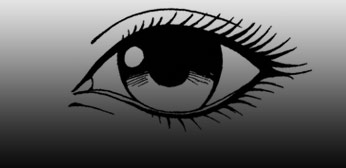Amblyopia is a disorder of the visual system that is characterized by poor or indistinct vision in an eye that is otherwise physically normal. It is estimated that is affects 1-5 % of the population. The disorder is caused by impaired transmission or lack of transmission of visual image into the brain in the period of the dysfunction of the eye or during early childhood. Amblyopia normally affects only one eye, but it is possible to be amblyopic in both eyes (if both are similarly deprived of a good, clear visual image). Detecting the condition in early childhood increases the chance of successful treatment.
Amblyopia is a developmental problem in the brain, not an organic problem in the eye (although, organic problem can induce amblyopia which persists even after the organic problem has resolved). The part of the brain corresponding to the visual system from the affected eye is not stimulated properly, and develops abnormally. This has been confirmed via direct brain examination. David H. Hubel and Torsten Wiesel won the Nobel Prize in Medicine in 1981 for their work. They demonstrated the irreversible damage to ocular dominance columns of visual cortex in kittens by visual deprivation during the so-called “critical period”. The maximum critical period in humans is from birth to two years of age.

Symptoms:
A great number of people with amblyopia (especially those with mild disorder) is not even aware of the fact that they have the condition until older ages, since the vision in their “stronger” eye is normal. However, people with severe amblyopia suffer from vision disorders, especially poor depth perception. They can also suffer from poor special acuity, low sensitivity to contrast and some “higher-level” deficits to vision such as reduced sensitivity to motion. These disorders are usually specific to amblyopia. Symptoms also include disturbances of binocular vision, such as limited stereoscopic depth perception and the patient usually has difficulty seeing the three-dimensional images in hidden stereoscopic displays such as autostereograms. However, depth perception from one eye stays normals (size, perspective, and motion parallax).
Types of amblyopia:
Amblyopia can be caused by deprivation of vision early in life due to vision-obstructing disorders, such as congenital cataracts, by strabismus, anisometropia (different degrees of myopia or hypermetropia in each eye). Amblyopia can physiologically occur due to smoking or consuming alcohol.
Treatment:
Treatment of amblyopia caused by strabismus or anisometropia consists of correcting refractive errors, if any, and forcing use of the amblyopic eye – either by patching the good eye, or by instilling atropine in the eye with better vision. One should be careful with these procedures because patching the eye for too long or exceeded instillation of atropine can lead to so-called reverse amblyopia in the other eye. Form deprivation amblyopia is treated by removing the opacity as soon as possible followed by patching or penalizing the good eye to encourage use of the amblyopic eye.





 July 16, 2012
July 16, 2012